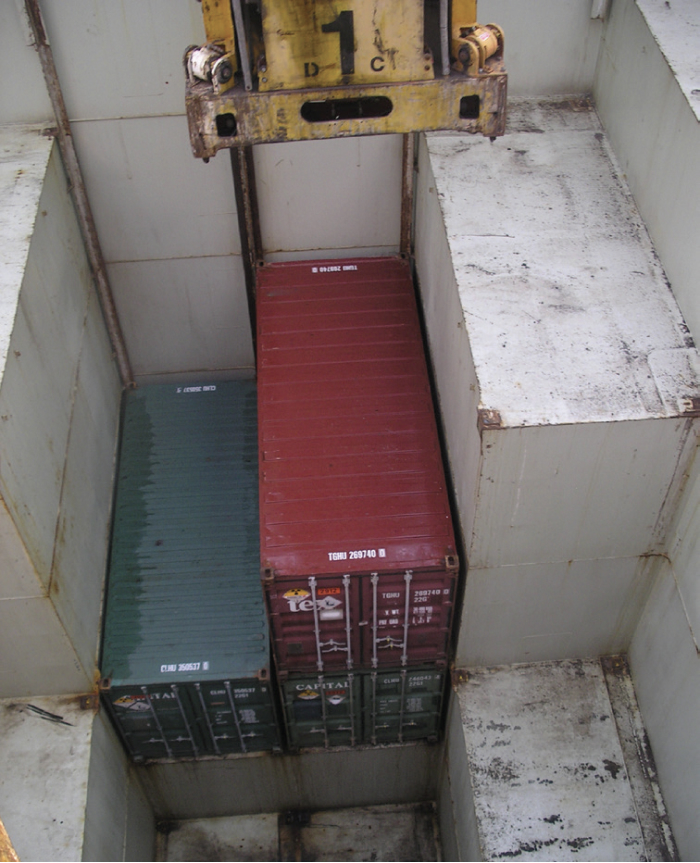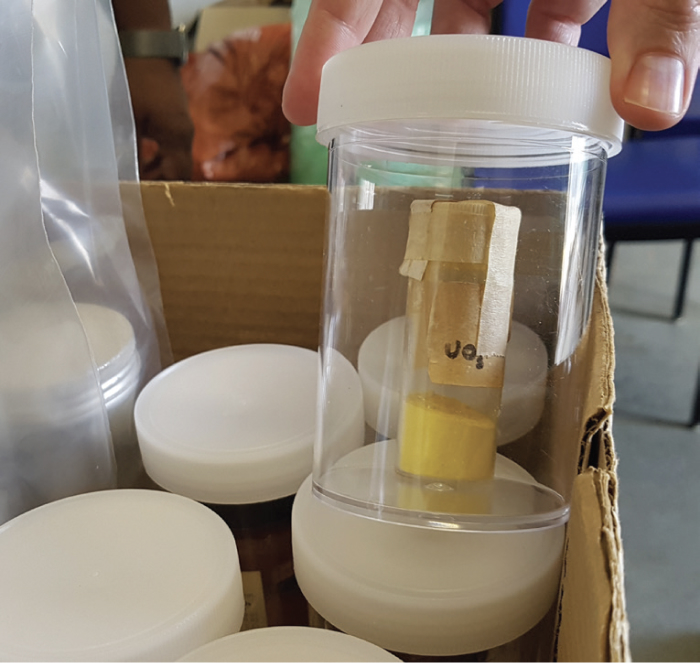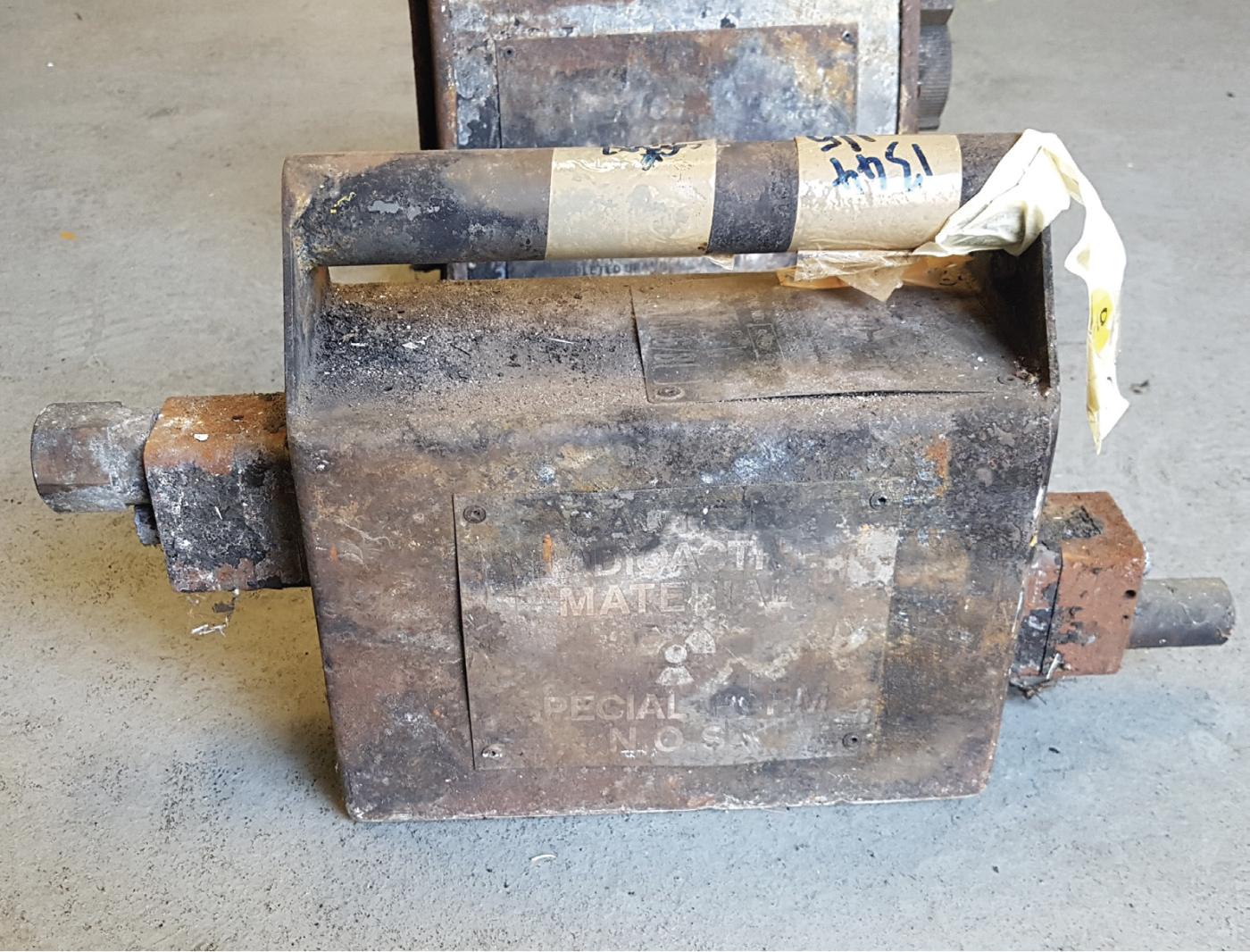Output 1.2: Nuclear Security
Protection of Australia's nuclear facilities, nuclear material and nuclear items against unauthorised access removal and sabotage, including Australia's uranium supplied overseas.
Performance Measures
- Security of nuclear material, technology and facilities meets Australia's obligations under the Amended Convention on the Physical Protection of Nuclear Material (A/CPPNM), the International Convention for the Suppression of Acts of Nuclear Terrorism (ICSANT) and bilateral nuclear cooperation agreements, as well as according with relevant IAEA guidelines.
- Internationally agreed standards for the security of nuclear material are applied to all Australian obligated nuclear material (AONM).
- Proactive and professional contributions are made to the development and effective implementation of nuclear security worldwide.
Performance Assessment
Australian Nuclear Material Categories
The table below lists the permit holders for which physical protection or information security is required, categorised according to the materials or items held.
| Nuclear Material Category | Type of 'Facility' | Number of Permit Holders |
|---|---|---|
| Category II7 | Research reactor, storage | 1 |
| Category III | Storage, scientific research | 1 |
| Category IV8 | Scientific research | 1 |
| Uncategorised9 | LOFs, radiographers | 106 |
| Natural uranium (UOC) | Uranium mines and concentration plants | 4 |
| Transport of nuclear material | Transport companies, ports, shipping lines | 19 |
| Nuclear Material Category | Type of 'Facility' | Number of Permit Holders |
|---|---|---|
| Associated Items | ||
| Associated Equipment and Technology | Enrichment research, storage and archives | 4 |
| Associated Technology | Patent attorneys | 5 |
International and Bilateral Obligations
The regulation of ASNO permit holders verifies that security arrangements at Australian nuclear facilities are in accordance with Australia's obligations under the A/CPPNM and relevant bilateral nuclear cooperation agreements. Australia continues to subscribe to the IAEA's fundamental principles of nuclear security and is committed to incorporating IAEA nuclear security recommendations10.
Throughout the reporting period, ASNO ensured that domestic nuclear security arrangements incorporated IAEA recommendations. During the export of uranium ore concentrates (UOC) from Australia, ASNO notified relevant parties of transhipments to meet Australia's international shipment notification obligations under the A/CPPNM.
Exports of Australian Uranium
Shipping and port supply chain disruptions and delays affected shipments of Australian UOC to international converters. Ongoing communication with relevant government agencies and overseas counterparts minimised the physical security impacts of these delays.
Australian uranium exports are subject to security arrangements that include checking the physical condition and integrity of fitted seals and containers at each port of unloading or transhipment. There were no reports of malicious acts involving the transport of UOC in Australia during the reporting period. However, there were several reports of minor incident received, each of which was reviewed and managed appropriately with no ongoing security issues.
Nuclear Security of UOC at Australian Mines and in Transport
During the reporting period, ASNO inspected several UOC transport and mining-related companies. In December 2021, UOC transport company, Neil Mansell Transport Pty Ltd, requested ASNO approval for a new depot and newly-constructed storage area. ASNO approved the storage yard as an approved location for UOC in containers incidental to transport.
Heathgate Resources, operator of the Beverley Uranium mine, submitted a revised Uranium Ore Concentrate – Physical Protection and Security Plan for the Beverley, Beverley North and Four Mile Operations, which ASNO approved in August 2021. Changes to the approved transport company for UOC required updates to the submitted Transport Security Management Plan. ASNO approved the transport security plan in December 2021.
BHP Olympic Dam submitted a revised Uranium Security Management Plan, which ASNO approved in December 2021.
ASNO also visited the offices of a proposed uranium mine in Western Australia in early June 2022 to provide guidance on nuclear security, safeguards and ASNO approval processes.
Review of Permits to Transport Nuclear Material and UOC
ASNO permits are reviewed according to industry type or permit class in an ongoing five-year cycle. In September 2021, ASNO reviewed and varied permits for the transport of nuclear material and UOC by road, rail and sea. These included permits in classes T1, T2, U2 and U3. All revised permits conform with relevant governance and risk management policies under the Government's regulatory reform agenda.
Route and Vessel Approval to Transport UOC
During the reporting period, ASNO approved 20 UOC transport routes and 29 vessels for the transport of UOC.

ASNO Requires UOC to be stored below deck. (Image courtesy of ASNO)
Major DBT Review
ASNO commenced a planned major review of Australia's design basis threat (DBT). As a central concept in the internationally-recognised IAEA nuclear security guidance document Nuclear Security Series No. 1311, the DBT is a statement of credible adversary intentions and capabilities. Physical protection systems at high-consequence nuclear facilities are designed and implemented to provide high assurance of protection against the DBT. ASNO maintains the DBT with the support of other Australian Government Agencies. Upon completion, an unclassified version of the DBT will be published on ASNO's website.12
Nuclear Security at Lucas Heights (ANSTO)
ASNO has continued to maintain strong regulatory oversight and effective communication with ANSTO, including with in-person visits and inspections. Key security matters progressed, including the March 2022 return of ANSTO intermediate level waste (ILW) from the UK through close collaboration between ASNO, ANSTO and several State and Federal Government agencies.
ANSTO, ASNO and the Australian Radiation Protection and Nuclear Safety Agency (ARPANSA) held quarterly security and safeguards meetings covering a range of issues, including regulatory coordination. During the reporting period, ANSTO appointed a Group Executive – Nuclear Safety, Security and Safeguards; a new Chief Security Officer; and an acting Agency Security Advisor.
ANSTO's Permit to Possess Nuclear Material and Associated Items was due for review during the reporting period, and a variation was granted on 30 June 2022. As a permit condition, ASNO continues to review a number of key security documents for the Lucas Heights facility. ANSTO has submitted a comprehensive periodic safety and security review (PSSR) of the OPAL reactor. The conduct of the PSSR is a requirement that is imposed by both ASNO and ARPANSA jointly. ASNO is now reviewing the suite of PSSR documents.
SILEX Enrichment Technology
ASNO conducted an inspection at Silex Systems Limited (SSL) on 23 May 2022, reviewing ongoing development activities, security plans and arrangements. A compliance verification was also conducted on a number of documents and communication procedures.
ASNO reviewed the existing SSL Permit to Possess Associated Technology and Authority to Communicate, issuing a revision on 30 June 2022. To facilitate the development of the Silex process towards commercialisation, ASNO also worked with stakeholders towards component transport approval. ASNO continues regulatory oversight of SSL's activities, including regular meetings and monthly reports.
Inspection of locations outside of facilities (LOF)
On 2 June 2022, ASNO inspected two approved LOFs: SGS Australia Radiation Safety Services Pty Ltd and the Department of Health Radiation Health Unit, to verify that physical protection measures remain suitable and that nuclear material safeguards are compliant with ASNO-issued permits to possess nuclear material.

Small inventories are inspected at a permit holder (Image courtesy of ASNO)
Ubaryon Enrichment Technology
Ubaryon Pty Ltd holds a Permit to Possess Associated Technology for research and development of an innovative uranium enrichment technique. Flooding in NSW affected Ubaryon resulting in a decision to relocate operations. ASNO continues to support the company to develop its security measures and provides security compliance guidance during discussions on the commercial partnership and technology development.
Nuclear Security Guidance Committee (NSGC)
The primary role of the Nuclear Security Guidance Committee (NSGC) is to manage the production of guidance documents in the IAEA Nuclear Security Series (NSS). The NSGC comprises over 50 IAEA member states, is constituted on rolling three-year terms and meets twice per year at the IAEA in Vienna (i.e. six meetings per term). Australia (ASNO) has been a member since its inception in 2012.
The fourth term of the NSGC commenced in 2021, and the new Director, Nuclear Security Section ASNO (Ms Rebecca Mackenzie) was nominated as the Australian NSGC representative in June 2022. The 21st meeting of the NSGC was held in Vienna in June 2022. It continued to focus on the development of nuclear security guidance, the nuclear safety/security interface, and the revision or drafting of future publications.

Scorched but still safeguarded material (Image courtesy of ASNO)
7 Nuclear material category is based on IAEA Nuclear Security Series No. 13
8 Category IV limits are 15g≥Pu>10g; 15g ≥(235U≥20%)>10g; 1000g ≥(235U<20%–10%)>10g;
10 000g ≥(235U<10%)>10g; 15g ≥233U>10g; unirradiated source material ≤5000kg. (%-enrichment)
9 i.e. below Category IV quantities
10 The 2014 Joint Statement on Strengthening Nuclear Security was distributed by the IAEA as INFCIRC/869 and can be found at: https://www.iaea.org/sites/default/files/publications/documents/infcircs/infcirc869.pdf
11 Also referred to as INFCIRC/225/Rev.5
12 https://www.dfat.gov.au/international-relations/security/asno/Pages/design-basis-threat

